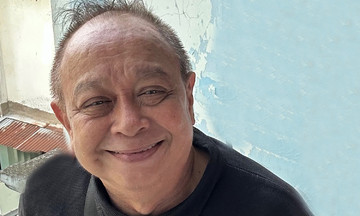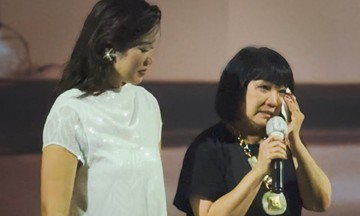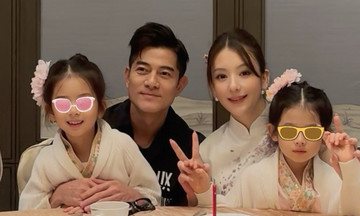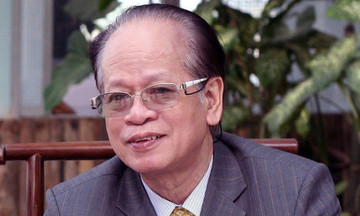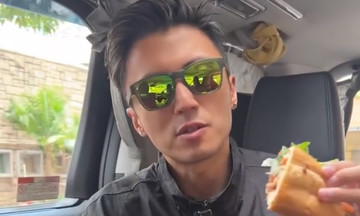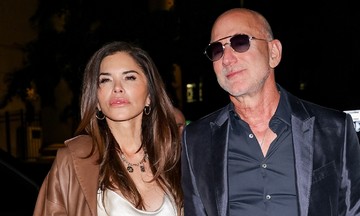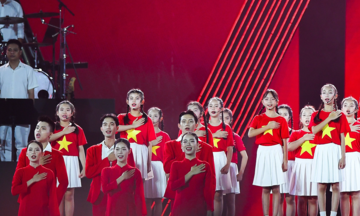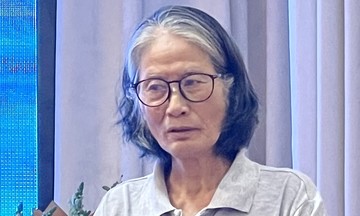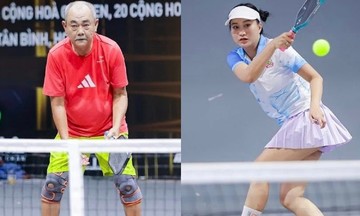From the French Resistance era, People's Art Troupes and Army Art Troupes were established to boost the morale of soldiers, civilians, and youth volunteers. In 1967, as the American War reached its fiercest stage, Deputy Prime Minister Phan Trong Tue decided to form the "Singing Over Bombs" Art Troupe. Gradually, this name became a shared spirit, fueling a surge of artistic movements across the battlefields.
Commemorating the 80th anniversary of the August Revolution and National Day (2/9), many artists recall their time in war zones with songs, plays, and dances that have endured through the years. Back then, they were "flowers amidst the battlefield."
In the late 1960s, People's Artist Thanh Huyen and the Central Art Troupe (now the Vietnam National Song and Dance Theatre) were ordered to Nghe An, Quang Binh, and Vinh Linh (Quang Tri) to perform for troops and civilians. The troupe departed from Hanoi, cycling day and night. Their stripped-down bicycles, with mudguards removed and only essential parts remaining, minimized visibility to the enemy. Upon reaching Cam Bao Bridge (Nghe An), they were suddenly bombed. 15 people fell onto the railway tracks, encouraging each other to remain calm.
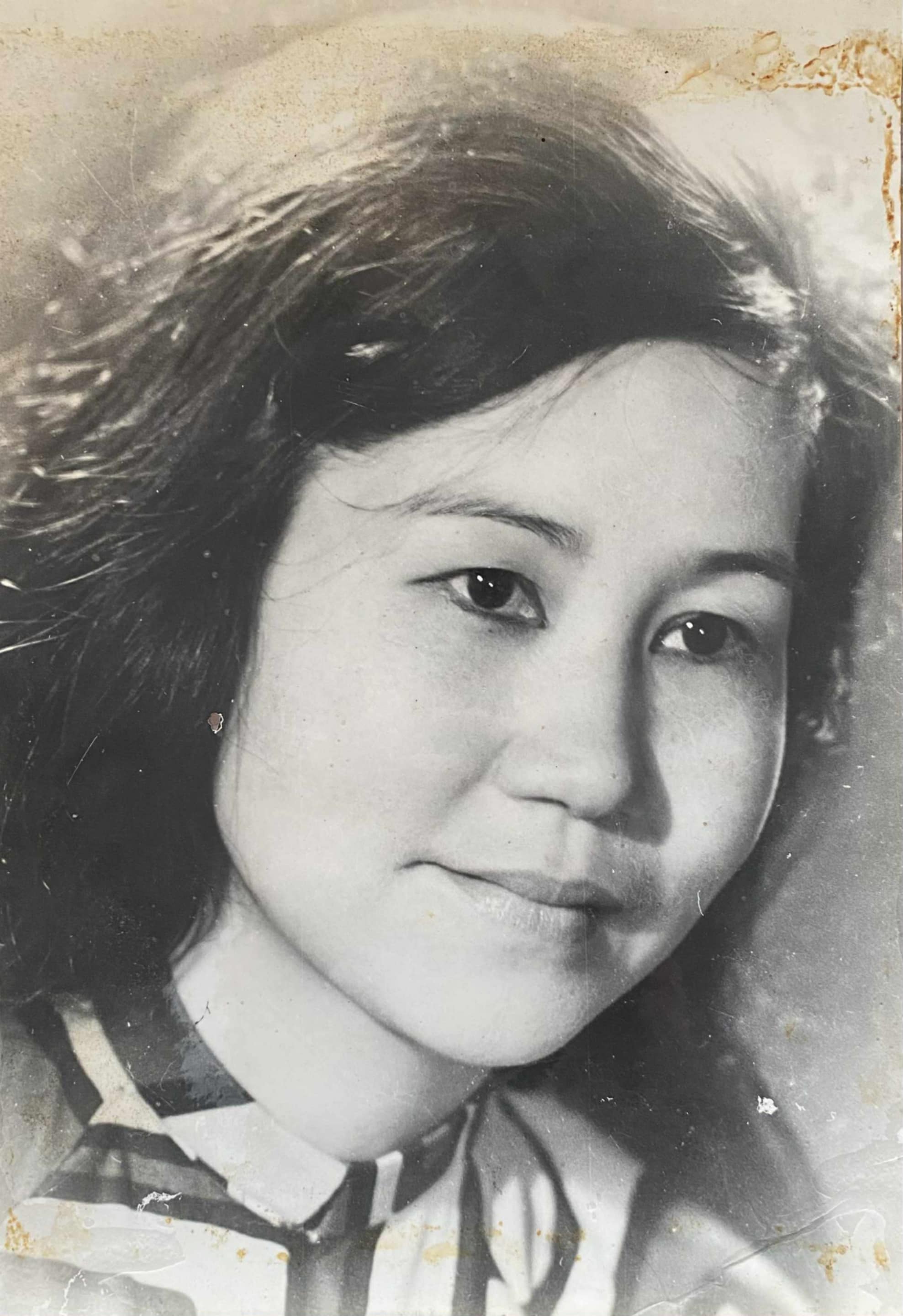 |
People's Artist Thanh Huyen during the American War. Photo: Provided by the artist |
People's Artist Thanh Huyen during the American War. Photo: Provided by the artist
Exactly 60 years ago, after finishing 7th grade, artist Le Thi Hoai Thanh became a dancer for the Ha Tinh People's Art Troupe (which included singing, dancing, and drama). Small in stature but carrying a heavy backpack filled with gas lamps, costumes, backdrops, rice, salt, and a walking stick for the steep climbs, she recalls, "I don't know how, but I always volunteered to lead the way for dozens of kilometers without feeling tired." The troupe journeyed across all eight districts of Ha Tinh, and even into Quang Binh and Vinh Linh (Quang Tri) to perform.
For People's Artist Quang Tho, in 1971, while working as a miner in Quang Ninh with a naturally gifted voice, he was recruited by the provincial General Art Troupe. From then on, he and his comrades "traversed the Truong Son mountains to save the country," equipped with an iron loudspeaker, an amplifier, a guitar, and an accordion. Half of his troupe were women. On days when the female artists were sick, the men took turns carrying them and their backpacks. Through sun and rain, floods and dry seasons, even when streams dried up so much that "butterflies had to land on rocks to sip water from the moss," the troupe pressed on.
The artists haven't forgotten the makeshift stages: in the jungle, by streams, deep in tunnels, or in field hospitals, close to death. Once, People's Artist Thanh Huyen's troupe performed for the Nguyen Viet Xuan unit (Quang Tri), which had just shot down an American plane. Late at night, they chose to stay with local families for convenience rather than remain at the performance site. This decision unknowingly saved their lives. That night, the area where they had performed was bombed, claiming many lives. People's Artist Quang Tho and his team also escaped death by moving to a different location after entertaining 600 soldiers at the end of 1971.
Artist Le Thi Hoai Thanh recounted a time when they were performing on Route 21 (Thach Ha, Ha Tinh) when American planes arrived. The entire troupe turned off their gas lamps, lay flat to avoid the bombs, and then resumed their performance once the planes were gone. Such incidents became commonplace, diminishing their fear.
Despite the dangers, they persistently brought their songs to the battlefield. Artist Hoai Thanh vividly remembers the eyes and smiles of the soldiers, along with their resounding cheers of "Encore! Encore!" during her performances in dances like "Pestle Hand, Gun Shoulder," "Suy Van," "Hoan Thu's Jealousy," and especially her two roles – the little girl and the cadre – in "Wooden Grenade." Soldiers gifted the troupe simple presents like dry rations and bits of meat, strengthening their bond.
People's Artist Quang Tho brought songs about their homeland to the battlefield: "Truong Son Song," "East Truong Son," "West Truong Son," describing the Truong Son Road during those years as "a festival." Each time he sang, he acted as a conductor, leading the soldiers in song. Initially hesitant, they eventually joined in, raising their voices together.
He believes art can stir the human spirit, both collectively and individually. Once, he sang "Red Leaves" in a field hospital where a female soldier was battling severe malaria. Upon his return, he learned she had passed away, but before her death, she had asked the medic to thank him, saying she would never forget the image of the artist that day. "Red Leaves" has remained a staple in his repertoire for many years.
"Red Leaves" (poem by Nguyen Dinh Thi, music by Hoang Hiep), performed by People's Artist Quang Tho. Video: VTV Music
While her time performing at the front wasn't extensive, it left a profound impact on People's Artist Thanh Huyen. Her daily routine was consistent: travel by day, perform by night. Her luggage consisted of a "ba ba" shirt and a youth volunteer shirt. Audience members would shine flashlights on the stage to see the performers' faces. Despite limited rehearsal time, the artists worked together seamlessly. She often performed solo or in duets with People's Artist Manh Ha, singing songs like "Hanoi - Hue - Saigon" and "The Plowing Road of Diligence."
Mentioning "The Ballad by the Hien Luong River," she becomes emotional. She describes singing while listening to loudspeakers echoing from both riverbanks, watching boats from North and South meet on the Ben Hai River, exchanging only furtive nods. Many soldiers of the Republic of Vietnam were captivated by her voice, even sending requests for her songs to the radio station.
People's Artist Thanh Huyen performs "The Ballad by the Hien Luong River." Video: YouTube Bai ca khong quen
Upon hearing news of the victory while traveling to a performance, People's Artist Thanh Huyen and the troupe erupted in cheers: "Peace at last! Reunification!" Some wept with joy: "Now, returning home, even a meal of morning glory without meat will taste delicious." This marked a fulfilling end to a life dedicated to revolutionary music, from her early days performing with the Au Tri Vien Children's Troupe in Hanoi, singing for President Ho Chi Minh, performing on the battlefield, to representing Vietnamese culture in France, Algeria, Italy (for the Paris Peace Accords), and numerous other countries.
After two years of active wartime performances, People's Artist Quang Tho was sent to study at the Vietnam School of Music (now the Vietnam National Academy of Music). His career, spanning over half a century, is intertwined with revolutionary music. He continues to perform songs like "Red Leaves," "Uncle Ho is Marching with Us," "He is the Invincible Belief," "Binh Tri Thien in Flames," and "Meeting on Truong Son Peak." He hopes younger generations will appreciate and preserve this revolutionary music – a legacy from their forefathers' wartime experiences.
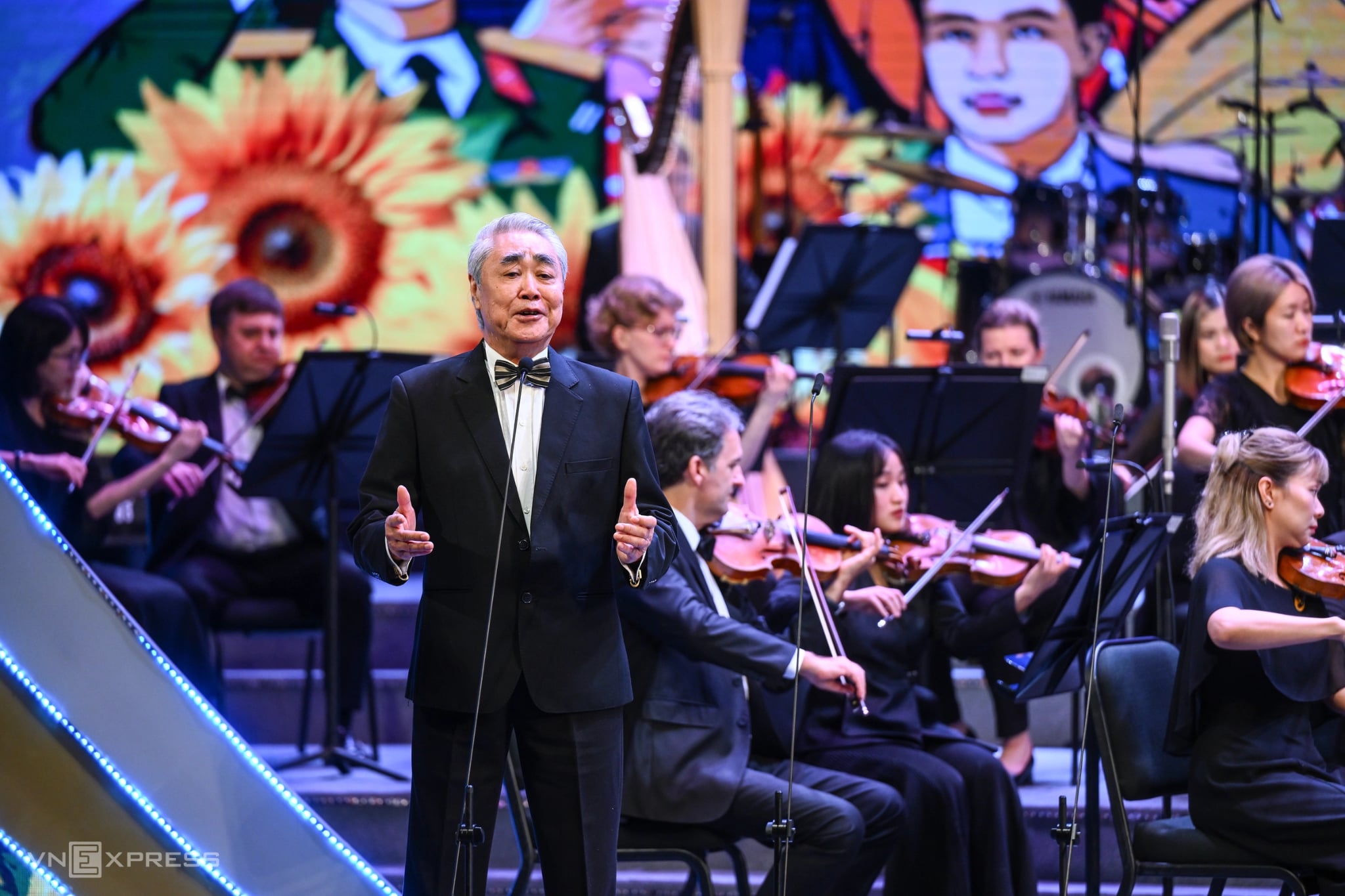 |
People's Artist Quang Tho during the art performance "The Party in the Spring of Great Victory" at the end of April. Photo: Giang Huy |
People's Artist Quang Tho during the art performance "The Party in the Spring of Great Victory" at the end of April. Photo: Giang Huy
Reflecting on the war years, artist Le Thi Hoai Thanh remembers the joy and passion of embodying her roles. But she also acknowledges the loss, recalling the time she learned of five comrades' deaths. Another time, upon returning home, she discovered her father had passed away over a month prior, while she was with the Art Troupe, encouraging the people of southern Vietnam in their reconstruction efforts after 1975.
Even now, she occasionally dreams of jumping into bomb shelters, climbing the slopes of Quang Tri, calling out in her sleep, "Wait for me!", receiving no reply, or finding herself unprepared for a performance. Despite this, she remains positive, engaging in artistic activities to fulfill her passion for the stage. Her message to young artists: "Money is important. But passion for the craft is even more so. Artists should strive to develop their talents and contribute meaningfully to the country."
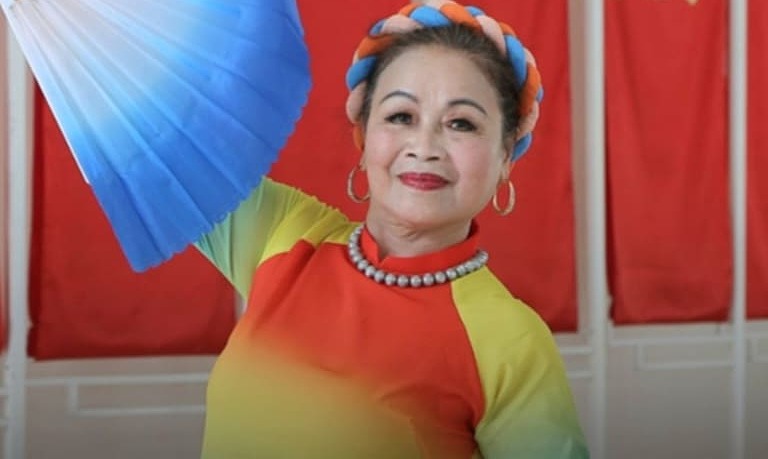 |
Artist Le Thi Hoai Thanh actively participates in art activities at the age of 81. Photo: Provided by the artist |
Artist Le Thi Hoai Thanh actively participates in art activities at the age of 81. Photo: Provided by the artist
Khanh Linh




